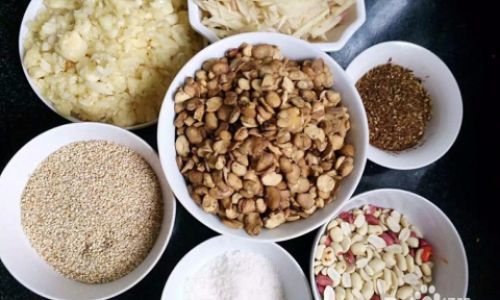Introduction
Edamame, the Japanese term for fresh soybeans, has become a staple in modern cuisine, transcending cultural boundaries with its nutritious profile and versatile flavor. Whether enjoyed as a snack, a side dish, or incorporated into various recipes, fresh edamame offers a delightful burst of freshness and earthiness that can elevate any meal. This article delves into the intricacies of how to prepare fresh edamame in ways that not only highlight its natural sweetness but also create mouthwatering dishes that will satisfy both the palate and the soul. From boiling and seasoning to blending it into innovative creations, let’s explore the myriad ways to make fresh edamame taste absolutely delicious.
Understanding Fresh Edamame
Before diving into the cooking methods, it’s crucial to understand what makes fresh edamame so special. Edamame beans are harvested while they are still green and tender, providing a snap when bitten into. They are rich in protein, fiber, vitamins, and minerals, making them an excellent choice for health-conscious individuals. Their mild, slightly sweet flavor pairs well with a variety of ingredients, allowing for endless culinary possibilities.

Basic Preparation Techniques
-
Sorting and Rinsing: Start with fresh, preferably organic edamame pods. Sort through them to remove any debris, damaged pods, or beans that look discolored. Rinse the pods thoroughly under cold running water to ensure they are clean.
-
Trimming the Ends: While some recipes call for leaving the pods whole, trimming the ends slightly can make them easier to handle and cook evenly. Use a sharp knife to cut off a tiny bit from both ends of each pod.
-
Blanching: Blanching is a quick process of boiling the edamame pods for a short period (usually 2-3 minutes) followed by an immediate ice water bath to stop the cooking process. This step helps retain the vibrant green color and tender texture of the beans.
Boiling and Seasoning: The Classics
One of the simplest yet most rewarding ways to enjoy fresh edamame is by boiling it and adding a touch of seasoning. Here’s how:
-
Boiling: Fill a large pot with water and bring it to a rolling boil. Add a pinch of salt to enhance flavor. Carefully drop the prepared edamame pods into the boiling water and cook for about 3-5 minutes, depending on your preference for firmness.
-
Draining and Seasoning: Once cooked, drain the edamame in a colander and rinse with cold water to stop the cooking. Transfer to a serving bowl and sprinkle with sea salt, a pinch of black pepper, and a squeeze of lemon juice for a refreshing twist. For a Japanese twist, try adding a dash of soy sauce and a sprinkle of sesame seeds.
Sautéed Edamame: Elevating the Simple

Sautéing edamame takes it to a new level of flavor complexity. Here’s a quick recipe:
-
Preparation: Remove the beans from their pods. You can do this by gently squeezing the pod to pop the beans out, or use a small knife to cut the pod lengthwise and then remove the beans.
-
Sautéing: Heat a tablespoon of olive oil or sesame oil in a skillet over medium-high heat. Add minced garlic and ginger (optional) and sauté until fragrant, about 30 seconds. Add the edamame beans and cook, stirring occasionally, until they are lightly browned and slightly crispy, about 5-7 minutes.
-
Seasoning: Season with salt, pepper, and a drizzle of soy sauce. For an added layer of flavor, you can also toss in some chopped scallions or a sprinkle of toasted sesame seeds before serving.
Edamame Salad: A Refreshing Twist
Edamame makes an excellent addition to salads, adding texture and protein. Here’s a delightful edamame salad recipe:
-
Ingredients: Cooked and shelled edamame, cherry tomatoes halved, cucumber diced, red onion finely sliced, and fresh cilantro chopped.
-
Dressing: In a small bowl, whisk together olive oil, rice vinegar, honey, Dijon mustard, salt, and pepper.
-
Assembly: In a large bowl, combine the edamame, cherry tomatoes, cucumber, red onion, and cilantro. Pour the dressing over the salad and toss gently to combine. Allow the salad to sit for a few minutes before serving to let the flavors meld together.

Edamame Hummus: A Unique Spread
Looking for something unique? Try making edamame hummus. Here’s a simple recipe:
-
Cooking the Edamame: Cook the edamame beans as described in the boiling method but without seasoning. Drain and let them cool.
-
Blending: In a food processor, combine the cooked edamame, tahini, lemon juice, garlic, salt, and a bit of water or vegetable broth to reach your desired consistency. Blend until smooth and creamy.
-
Serving: Taste and adjust the seasoning if necessary. Serve with pita chips, veggie sticks, or spread on a wrap for a protein-packed lunch.
Conclusion
Fresh edamame is a versatile ingredient that can transform any meal into a culinary adventure. From classic boiling and seasoning to innovative dishes like sautéed edamame, refreshing salads, and unique spreads like edamame hummus, the possibilities are endless. By mastering these basic preparation techniques and exploring creative recipes, you can bring the fresh, nutritious charm of edamame to your kitchen, delighting your family and friends with each delicious bite. So, the next time you find yourself with a bag of fresh edamame, remember that with a bit of creativity and care, you’re just a few steps away from crafting culinary delights that will leave a lasting impression. Happy cooking!




0 comments